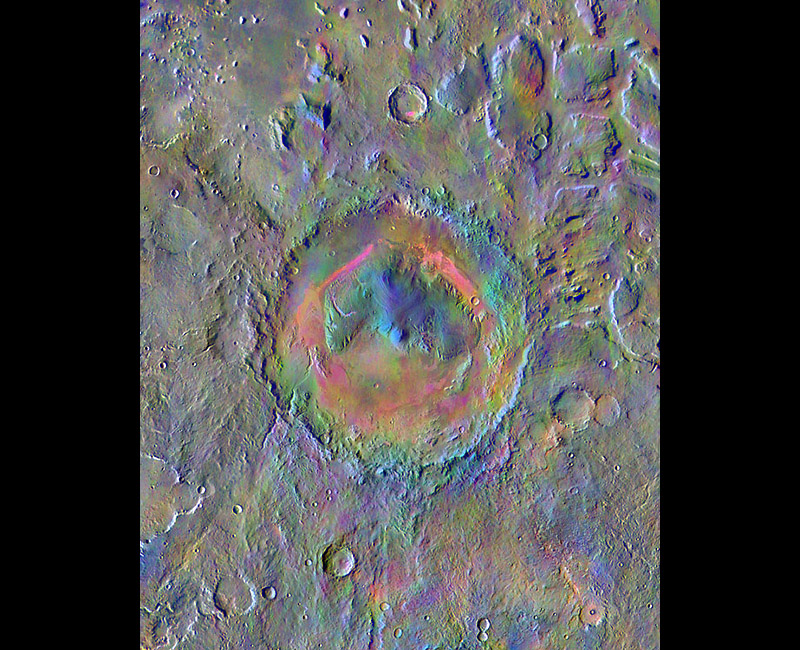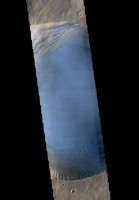Gale Crater, home to NASA’s Curiosity Mars rover, shows a new face in this image made using data from the THEMIS camera on NASA’s Mars Odyssey orbiter. The colors come from an image processing method that identifies mineral differences in surface materials and displays them in false colors. (NASA/JPL-Caltech/Arizona State University)
Home Gale Crater, home to NASA’s Curiosity Mars rover, shows a new face in this image made using data from the THEMIS camera on NASA’s Mars Odyssey orbiter. The colors come from an image processing method that identifies mineral differences in surface materials and displays them in false colors. (NASA/JPL-Caltech/Arizona State University) Gale Crater, home to NASA's Curiosity Mars rover, shows a new face in this image made using data from the THEMIS camera on NASA's Mars Odyssey orbiter. The colors come from an image processing method that identifies mineral differences in surface materials and displays them in false colors. (NASA/JPL-Caltech/Arizona State University)
Gale Crater, home to NASA’s Curiosity Mars rover, shows a new face in this image made using data from the THEMIS camera on NASA’s Mars Odyssey orbiter. The colors come from an image processing method that identifies mineral differences in surface materials and displays them in false colors. (NASA/JPL-Caltech/Arizona State University)



